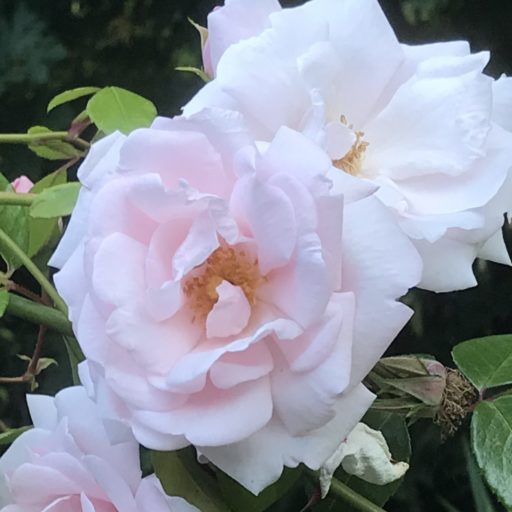Mount Saint Helens. I was a young teen when she blew her top for the first time in living memory. Recently returned to the Pacific Northwest, I remember some inconvenience due to ash fall, and my parents’ worried expressions, but nothing like the people on the other side of the mountains for hundreds of miles. Where we lived, we had nearly a week before we got ash and never had to contend with real choking, day-to-night conditions. The ocean winds blew it all inland…
Quick note from my recent studies: St. Helens was named by Capt. George Vancouver for the 1st Baron St. Helens, a man named Alleyne Fitzherbert. Just think… we could have had Mt. Fitzherbert blow its top instead!
So here we were, nearly 30 years later and we were driving up to the mountain. Here is the first pic we took that day, this from the elder stidkid. I pointed to the mountain as I was driving, and said — Look at that! She’s got a steam cloud! Of course, the children thought I was joking. But you don’t live that close to an active volcano without learning the difference between a drifting cumulus and the rising plume of a steam eruption.

The steam plume is just about in the center of this pic — admittedly a little hard to see because of the low contrast between “cloud” and blue sky. I tweaked the colors slightly, but how it shows up on your browser may not be as clear as on mine.
The rest of the pics in this photo essay will show up as thumbnails in a gallery that you can click on to see the bigger picture. Use your browser’s back button to return to this page and see the rest…
Finally, though it was a fun day trip, it was also educational — for me as well as for the children. The geology is fascinating, and even more importantly, as we walked through the visitor center we realized that LIFE is so precious. Some of the people who died (geologist Dave Johnston, whose efforts to understand the mountain saved perhaps thousands of lives) were there as professionals trying to predict the eruption, others who lost their lives that day were vacationers or loggers — or in the case of Harry R Truman, just residents of the area. People who thought they were safe turned out to be very much in the center of it all. Other people lost their homes, their livelihoods (livestock, businesses). Though not a very large eruption in the scale of explosiveness, it was still a very impressive event. Particularly to those who live in this area.
And yet, within a year of the eruption many animals and plants were spontaneously re-establishing themselves. Today, there are small trees and some wildflowers in evidence within a couple miles of the crater rim.
Ours is a dynamic world, full of change and life. Disastrous things happen, yes. And so do marvelous things.

Leave a Reply